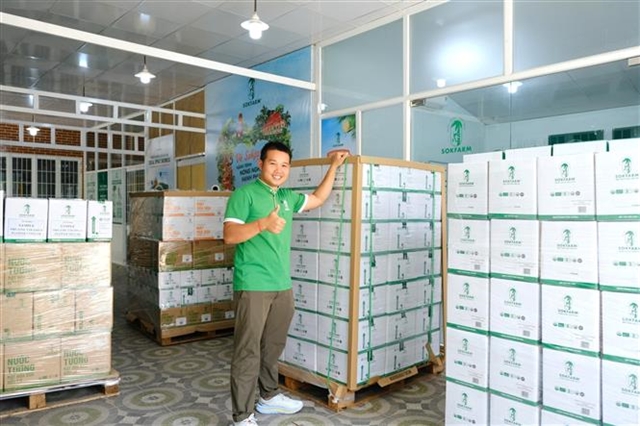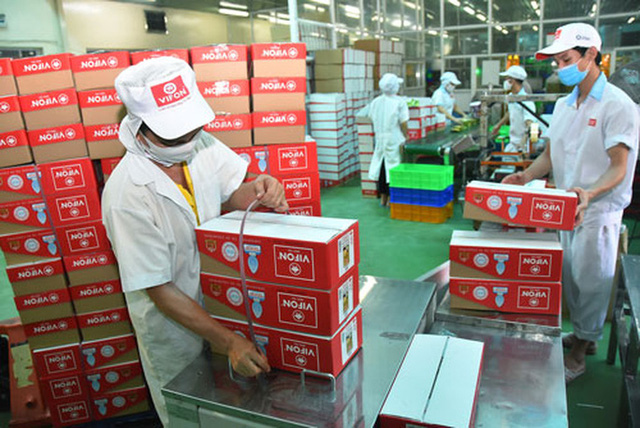 Economy
Economy

Strong increase in capital demand has been seen as production activities of enterprises gradually showed signs of recovery, forcing banks to reschedule their lending plans.

|
| Businesses need more capital to recover their production activities this year. — Photo cafef.vn |
HÀ NỘI — Strong increase in capital demand has been seen as production activities of enterprises gradually showed signs of recovery, forcing banks to reschedule their lending plans.
According to the State Bank of Việt Nam (SBV), deposit and lending interest rates continued to decline compared to the end of last year. The central bank required commercial banks to strictly control credit flow in risky areas such as real estate and securities to accumulate capital for production and business of priority sectors.
As of April 16, the economy's credit increased by 3.34 per cent compared to the end of last year. In the first quarter of 2020, the credit of the economy only increased by 1.47 per cent.
Nguyễn Hoàng Minh, Deputy Director of the State Bank in charge of HCM City Branch, said capital mobilisation increased only 0.7 per cent while outstanding credit increased by 3.5 per cent compared to the end of last year.
Leaders at some commercial banks told media demand for capital from businesses and the market is increasing as the economy recovers from the COVID-19.
The deputy general director of one plastic company, which could borrow with the lowest interest rate in the industry at about 5.4 per cent per year, said: "Production and business activities recovered quite strongly compared to last year, and the company's capital demand is large. Our enterprises are also classified as high credit, so they are given priority by the bank."
Talking at the recent 2021 annual shareholder meeting, Nguyễn Đức Thạch Diễm, General Director of Saigon Thương Tín Commercial Joint Stock Bank (Sacombank), said that by mid-April this year, the bank's capital mobilisation increased by just 3.5 per cent while lending increased to 5.8 per cent.
Previously, the general director of Sacombank also said that many individual and corporate customers contacted the bank for loans. As credit growth target was only about 9 per cent this year, it could not meet all of the demand but instead focus on production businesses and limit the flow to real estate.
Nghiêm Xuân Thành, chairman of Joint Stock Commercial Bank for Foreign Trade of Vietnam (Vietcombank), said the bank's credit balance increased by 3.7 per cent while the whole system increased by 2.93 per cent, adding the bank was number one in credit growth last year and continued to have the largest growth in term of credit so far this year.
Seeing the increase, the central bank again told commercial bank to manage their lending, in which they must offer low interest rates for production firms, helping them recover, while most of the commercial banks wanted to increase their credit limit to serve demand.
At the same time, leaders of many banks said that they would strictly control capital in risky areas such as real estate projects, BOT, and securities.
Leader of one large-scale joint stock bank said: “Banks are tightly controlling capital flows into real estate, especially in areas with land fever. For individual customers, if they ask for a loan to buy a house to live in, they will be given preferential treatment but if they borrow to buy a house as an investment to rent, the bank will apply higher interest and lending rates because of higher risk factors.”
Nguyễn Tuấn Anh, director of the credit department of SBV told the banking industry meeting on Q1 results that the central bank set this year’s credit target of about 12 per cent and it would be adjusted in accordance with the actual developments and situation.
Again, Anh said SBV required credit institutions to continue to expand their capital and focus on lending to priority areas and tightly control credit in potentially risky areas such as real estate, BOT projects, and securities.
At the same time, the central bank asked credit institutions to continue implementing solutions to overcome difficulties for people and businesses affected by the pandemic.
According to statistics to the beginning of April, 2021, credit institutions have restructured the repayment term for 262,000 customers with a loan balance of about VNĐ357 trillion (US$15.38 billion) as well as exempting and reducing interest rates for more than 663,000 customers with outstanding loans of VNĐ1.27 million billion, giving new loans worth more than VNĐ3.16 million billion with preferential interest rates with accumulated sales from January 23, 2020. — VNS








.jpg)
